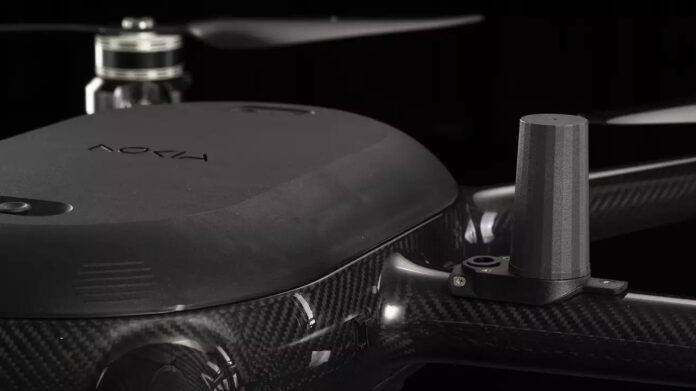Nokia has introduced a “modular and durable” industrial drone solution, Nokia Drone Networks, to run beyond-line-of-sight off a private cellular network and edge compute array. Nokia is bundling drones, a docking station, a ground control station, plus add-on IoT sensors and cameras. It is pitching to the same verticals that it is selling its private LTE and 5G (DAC) network and industrial compute (MXIE) solutions, namely industrial and logistics, as well as for specialist fire fighting and emergency scenarios.
The Finnish vendor is offering customised drones, so enterprises can add IoT sensors of their choice. The default bundle comes with a dual gimbal camera for high-definition streaming – with “integrated RGB and thermal videos”. Drones can also be equipped with other sensors for detecting smoke, motion, and radiation, for example, as well as with different payloads, such as loudspeakers and searchlights. Nokia is offering a payload development kit for enterprises to change the setup, and evaluate hardware compatibility to implement payloads for various use cases.
A statement said: “The solution enables the use of multiple drones to fly on automated individual missions steered from a single ground control station, running on the edge cloud. The solution supports customers and partners in the process of collecting data and information to meet business needs related to security and transport for example, and to facilitate operations in mission critical situations, like in public safety… The utilisation of aerial drones and drone technology is rapidly gaining momentum across various industries.”
The company’s own-made drones can withstand “high temperatures for fire monitoring in areas where helicopters cannot be used”, said Nokia. Multiple drones can be used to cover large areas, such as to provide real-time monitoring of factory premises, industrial campuses, or border areas, it said. It outlined use cases for monitoring and safety related to production facilities, railroads, pipelines, radio towers, and agriculture venues.
The solution provides mapping and route guidance to help, say, “guide rescue personnel in areas hit by natural disaster”. It enables local and remote control of drones, such as “by police for patrolling streets and monitoring the environment for criminal activities”. It can also be used for traffic monitoring and analytics to help police to enforce traffic laws and detect accidents. It also promoted drone usage in ports and shipping facilities.
Nokia stated: “[The solution] has high capacity to store video data for future use and back-end processing. Real-time drone video monitoring along with… command and control analytics can support port operators with improved situational awareness for effective traffic management, increased safety and overall efficiency. For example, specialised sensors on drones can help detect the usage of banned fuel types used by vessels already when they approach harbours. Using the docking station, such workflow can be automated.

